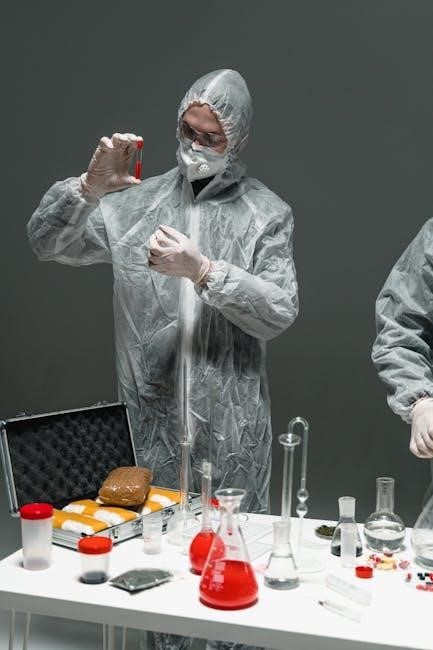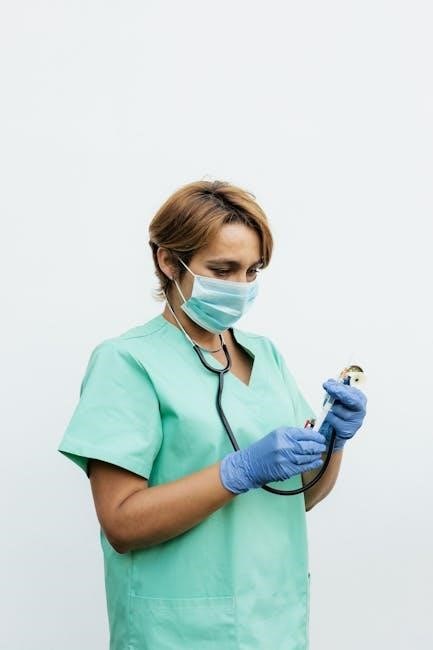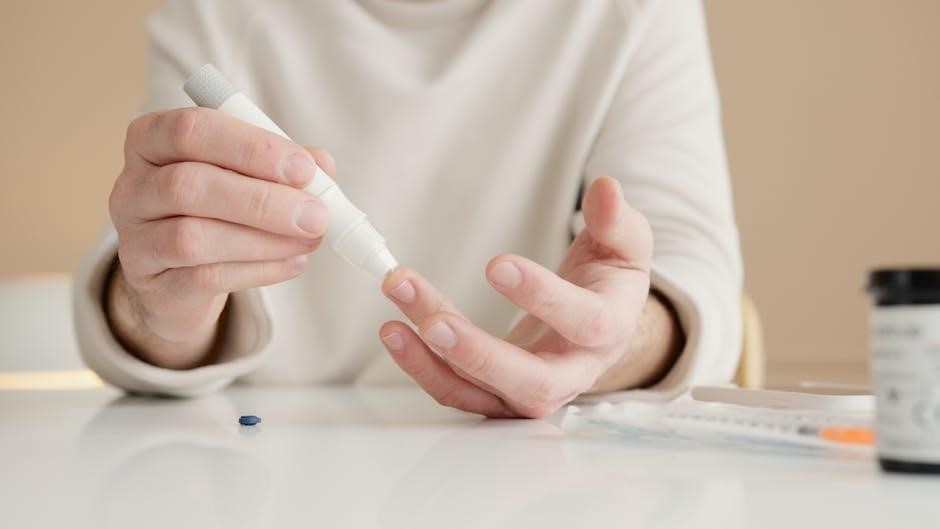resources to establish effective prevention strategies and protocols for safe working environments always.
Definition and Importance of Needle Stick Injury Protocol
The definition of needle stick injury protocol refers to a set of guidelines and procedures designed to prevent and manage needle stick injuries in healthcare settings, utilizing resources such as needle stick injury protocol pdf documents. These protocols are crucial in minimizing the risk of bloodborne pathogen transmission and ensuring a safe working environment for healthcare workers. The importance of needle stick injury protocol lies in its ability to provide a standardized approach to managing exposure incidents, thereby reducing the risk of infection and promoting a culture of safety within healthcare organizations. By implementing these protocols, healthcare facilities can demonstrate their commitment to protecting the health and well-being of their employees, while also complying with regulatory requirements and industry standards, as outlined in various needle stick injury protocol pdf guides. Effective implementation of these protocols requires ongoing education and training.

Immediate Measures After a Needle Stick Injury
Washing the affected area with soap and water is essential, as outlined in various pdf guides for immediate action always.
Washing and Cleaning the Affected Area
Washing the affected area with soap and water is a crucial step in preventing infection, as stated in various pdf guides. This simple yet effective method helps to reduce the risk of bloodborne pathogens entering the body. The use of running water and mild soap is recommended, as harsh chemicals or abrasive materials can irritate the skin and increase the risk of infection. It is also important to wash the area thoroughly, making sure to clean all surfaces that may have come into contact with the contaminated needle. By following proper washing and cleaning procedures, individuals can minimize the risk of infection and promote healing. Additionally, pdf resources provide detailed instructions on the proper technique for washing and cleaning the affected area.

Reporting and Documentation of Needle Stick Injuries
Reporting and documentation of injuries involves completing forms and pdf reports to track incidents and prevent future occurrences always.
Importance of Reporting and Documentation
The importance of reporting and documentation of needle stick injuries cannot be overstated, as it allows for the tracking of incidents and the implementation of prevention strategies. By completing forms and reports, healthcare facilities can identify areas where improvements can be made to reduce the risk of future incidents. This information can also be used to develop and refine needle stick injury protocols, such as those outlined in a pdf guide. Furthermore, accurate reporting and documentation are essential for ensuring that healthcare workers receive the necessary support and follow-up care after a needle stick injury. This includes access to post-exposure prophylaxis and counseling, which can help to reduce the risk of infection and promote overall well-being. Effective reporting and documentation are critical components of a comprehensive needle stick injury protocol. They help to prevent injuries and promote a safe working environment for healthcare workers.
Prevention Strategies for Needle Stick Injuries
Prevention strategies include using safety-engineered devices and pdf guidelines to minimize risks and ensure safe working environments for healthcare workers always and effectively every time.
Use of Safety-Engineered Devices
The use of safety-engineered devices is a crucial aspect of preventing needle stick injuries, as outlined in various pdf guidelines and resources. These devices are designed to reduce the risk of injury by incorporating safety features such as needle shields and blunt needles. By utilizing these devices, healthcare workers can minimize their exposure to sharp objects and reduce the risk of infection. The implementation of safety-engineered devices is a key component of a comprehensive needle stick injury prevention strategy, and is recommended by various health organizations and regulatory agencies. Effective use of these devices requires proper training and education, as well as a commitment to safety protocols and procedures. Overall, the use of safety-engineered devices is an important step in reducing the risk of needle stick injuries and promoting a safe working environment for healthcare workers. This is supported by various studies and reports.

Post-Exposure Prophylaxis and Follow-Up
Healthcare workers receive post-exposure prophylaxis and follow-up care after needle stick injuries, using pdf guidelines to ensure proper treatment and monitoring always effectively.
Importance of Prompt Treatment and Follow-Up
The importance of prompt treatment and follow-up after a needle stick injury cannot be overstated, as it significantly reduces the risk of infection transmission. According to various pdf resources, immediate medical attention and post-exposure prophylaxis are crucial in preventing the development of serious diseases. The follow-up care also involves monitoring the affected individual’s health and providing necessary support and guidance. This comprehensive approach ensures that the risk of infection is minimized, and the individual can return to their normal activities without any long-term complications. Furthermore, prompt treatment and follow-up also help to reduce the emotional and psychological impact of the injury on the individual, allowing them to recover quickly and effectively, utilizing available pdf guidelines and protocols for optimal care and management.

Guidelines and Recommendations for Needle Stick Injury Protocol
Guidelines and recommendations for needle stick injury protocol are outlined in various pdf documents, providing essential information always.
Available Resources and Guidelines
Various resources and guidelines are available for needle stick injury protocol, including pdf documents from reputable organizations, providing comprehensive information on prevention and management strategies. These resources can be accessed online through websites and databases, offering easy access to healthcare workers, employers, and regulatory agencies. The guidelines cover topics such as risk assessment, exposure reporting, post-exposure prophylaxis, and follow-up care, as well as recommendations for safe working practices and sharps injury prevention. Additionally, many organizations offer training programs, workshops, and educational materials to support the implementation of needle stick injury protocols, ensuring that healthcare workers are equipped with the knowledge and skills necessary to prevent and respond to needle stick injuries effectively, utilizing available pdf resources to establish effective protocols.
